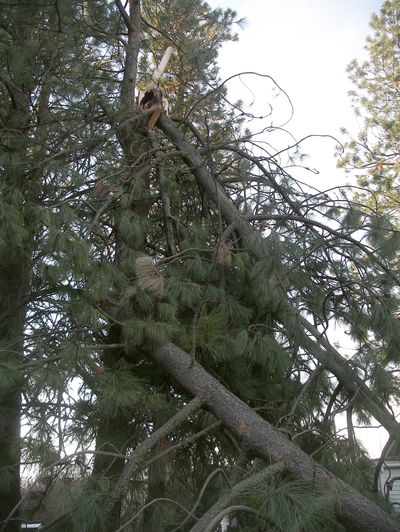Gardening with Pat Munts: Storm cleanup continues in yards

First I want to reiterate what the authorities have been saying all week. Be careful; stay away from anything tangled up in a wire. The linemen are trained to deal with such issues so watch them work and maybe buy them a pizza.
Secondly, if you have trees hung up on other trees or not flat on the ground, call in the professionals. Trees hung up at odd angles can shift unpredictably and you won’t be able to move fast enough to get out of the way. In the logging industry these hung up branches are called widow-makers for good reason; don’t become a statistic. Just because someone shows up with a chainsaw and a truck does not mean they know how to take down your tree. The city has posted a list of arborists that are permitted to work on trees in the city at: https://my.spokanecity.org/parksrec/news/2014/07/24/qualified-arborists-available/. Yes, it costs money but it beats a liability lawsuit involving an untrained and likely uninsured individual.
After all the big stuff is cleared away we will be able to assess what kind of damage the falling trees did to the rest of our landscapes. Fortunately, most everything had gone dormant for the winter so we don’t have to worry about keeping plants alive. In many cases, damaged deciduous shrubs can simply be trimmed up to clear away broken branches. Trim it back to the first undamaged branch and then shape it. If you have to cut a branch to the ground, leave a 6-inch stub to produce leaves next spring.
If falling trees broke branches off smaller deciduous trees, trim the damaged branches back to a healthy branch or the trunk, being careful to cut it just outside the branch collar, a ridge of bark right next to the trunk. Trim up torn bits of bark and wood to clean up wounds. Do not apply any tree wound dressings; the trees will heal themselves without your help quite nicely.
Conifers are a little harder to deal with. Trim off any broken branches as described above. If the leader has been damaged, cut it back to the next highest branch. Over time this branch may turn upward and replace it. This storm was particularly hard on spruce trees, snapping off a number of them halfway up. In this case, the tree is not likely to recover and should be removed. I know a church in the Valley that will be using a toppled spruce top for a Christmas tree. Something said about creating a silk purse out of a sow’s ear.